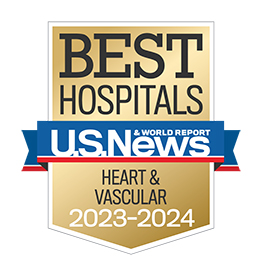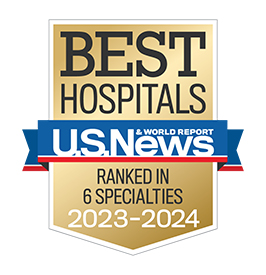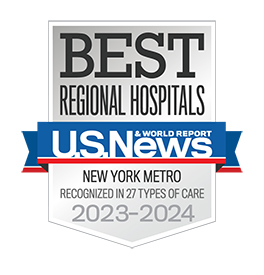Hackensack University Medical Center Advances Understanding of Mechanical Circulatory Support in Cardiogenic Shock Cases
Impella 5.5 and bridging to native heart recovery focus of abstracts presented at the International Society for Heart and Lung Transplantation Annual Meeting and Scientific Sessions
The 2023 International Society for Heart and Lung Transplantation Annual Meeting and Scientific Sessions featured a body of compelling research on mechanical circulatory support in cardiogenic shock cases from Hackensack University Medical Center. The studies include a close look at the latest Impella pump, the Impella 5.5, across various patient populations.
One of the center’s seven presented abstracts included a retrospective review of the first 100 patients to receive the Impella 5.5 at Hackensack University Medical Center, one of the first centers in the nation to implant the device in patients and the largest non-transplant center utilizing the Impella 5.5 device.
“We took a deep dive into the various patient populations, and tried to achieve recovery of the native heart with Impella. We looked at the etiology of heart failure and clinical markers to optimize,” said Kanika Mody, M.D., advanced heart failure cardiologist, and lead author on five of the seven presented abstracts.
This patient population is seriously ill with shock from various causes, including heart attack, heart failure or postcardiotomy shock. Of the center’s first 100 cases, 80% survived to explant of the Impella and 69% survived to discharge, where typically only 40 to 50% survived previously, Dr. Mody said.
“With the appropriate therapies and meticulous management by our team led by Dr. Mark Anderson, we can improve the rate of survival. Dr. George Batsides presented our experience with the Impella 5.5 in our first 100 patients. We showed that 72% of our patients that survived went home with their own heart, no LVAD or transplant,” said Dr. Mody. “Our patients are a unique population because we’re a non-transplant center. Most hospitals use Impella as a bridge to transplant, while we use it to get back to native heart recovery.”
Another presented study evaluated early upgrade to the Impella 5.5 in patient populations with cardiogenic shock following heart attack. They typically accessed care via the cardiac catheterization lab, where interventional cardiologists initially place a smaller device to stabilize the patient. This research looked at the implementation of our early escalation protocol developed by Dr. Anderson and Dr. David Landers. Patients are upgraded to Impella 5.5 based on certain clinical criteria outlined by the protocol, and our research found that a timely upgrade led to 78% survival to Impella explant. Of those patients that survived, 87% were discharged on medical therapy, and 13% went on to heart transplant.
Medication along with Impella management has shown success more broadly as well. In a longer range study, looking at Impella 5.0 and 5.5 from 2017 to 2021, Hackensack University Medical Center researchers looked at bridging INTERMACS 1 category patients to durable LVAD, a group with historically low survival due to severity of illness. The long-range view showed 92% survival to discharge and 60% 1-year survival.
Another study looked at the Impella as support for patients with right ventricular dysfunction on high-dose inotropes, which have high associated mortality when taken long term. Patients taking high-dose inotropes had the best outcomes when supported with Impella. These results included improved survival to LVAD.
An additional project evaluated the Impulse Dynamics Optimizer Smart CCM device. The study evaluated weaning from low-dose inotropes to using the device at home, something only a few centers are attempting, Dr. Mody said. A study of six patients showed excellent 1-year survival, and four of the six were off inotropes completely one year later.
“We’re focusing on modalities of heart failure therapy that lead to improved outcomes, and if able, native heart recovery. Before, patients that survived shock were destined for more machines or heart transplant. We’re now studying mechanisms of heart recovery, and ways of maximizing recovery to improve the lives of our patients,” Dr. Mody said of the center’s recent research crux.
“By stratifying patient populations and evaluating granular details, such as hormones and genetics, we hope to create a multidisciplinary plan for their best outcome – not trial and error and not waiting until they worsen to apply treatments,” Dr. Mody added.
The Hackensack University Medical Center team is now in the second phase of a feasibility study to see if people can successfully discharge home with the Bridge to Recovery Impella, which is not as invasive as an LVAD and may improve quality of life. This approach may also prove more cost effective for patient and health care systems, Dr. Mody noted.
The researchers are also evaluating other mechanical support devices, including Impella RP Flex and HeartMate 3 LVAD. They’ve now implanted the Impella 5.5 in 140 patients.
Learn more about cardiovascular innovations happening at Hackensack University Medical Center.


